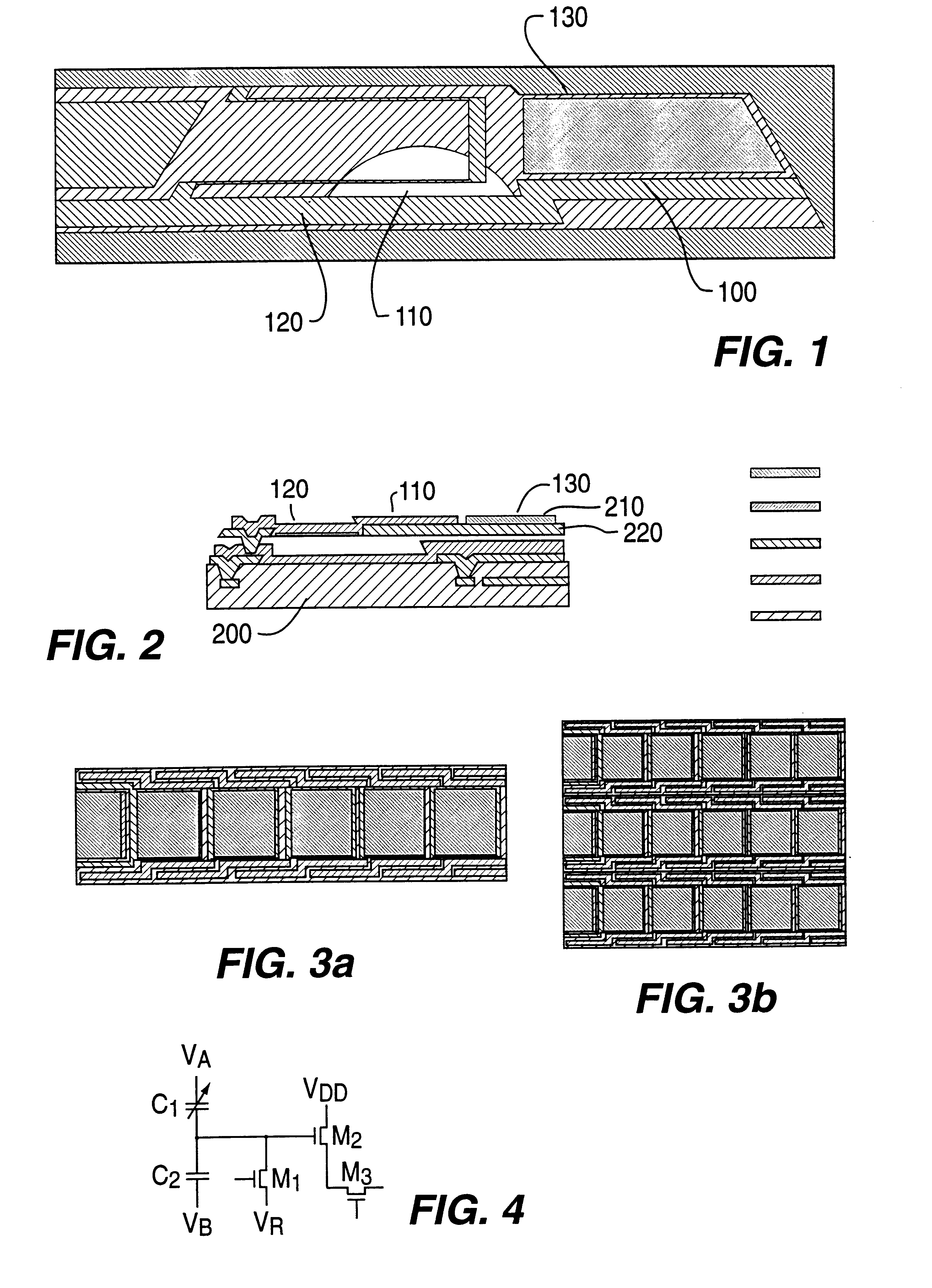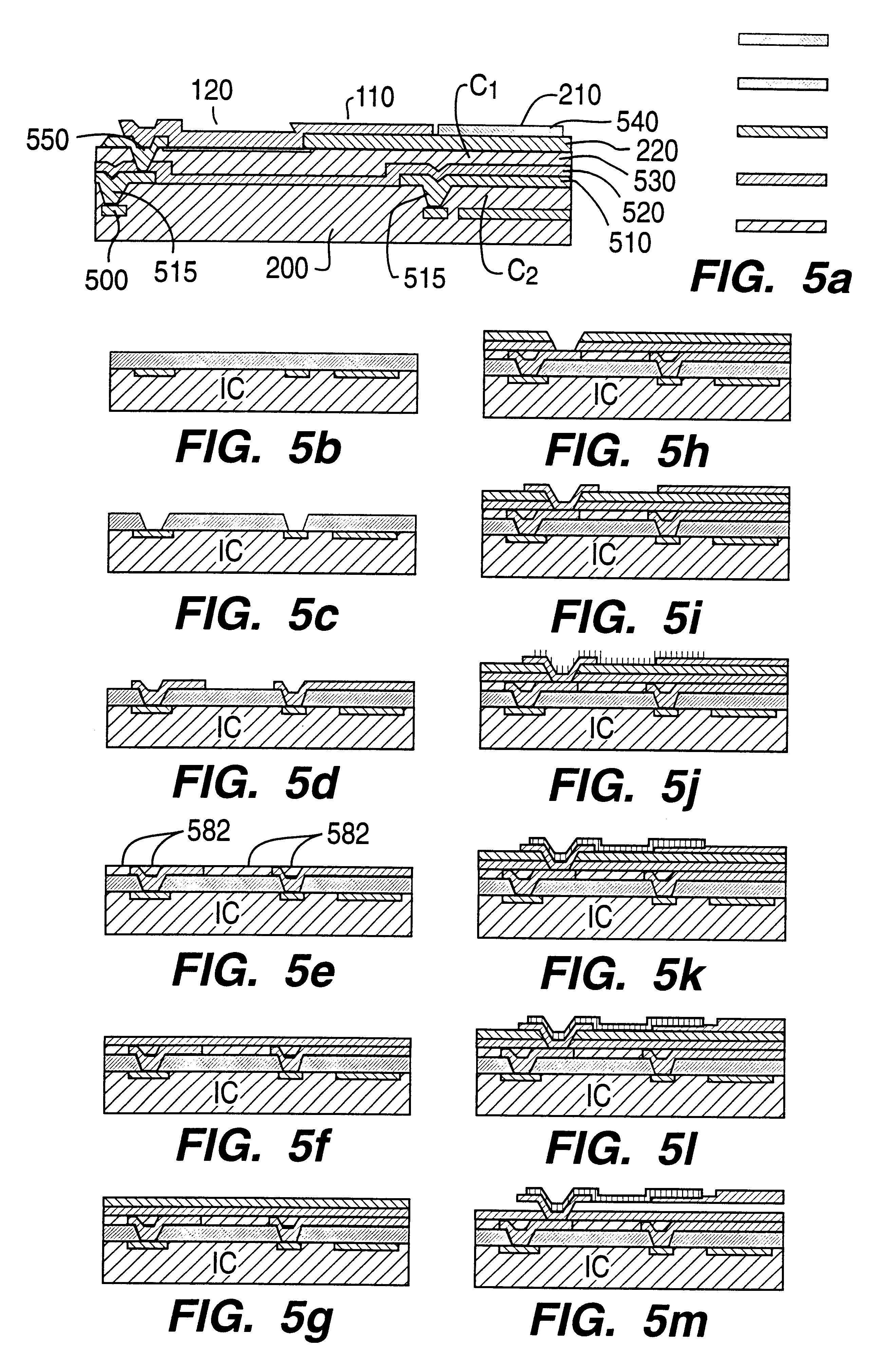Infrared imager using room temperature capacitance sensor
a capacitance sensor and infrared technology, applied in the field of high-performance infrared imagers, can solve the problems of limited operation of quantum detectors, limited operation of thermal detectors, and limited performance of existing uncooled sensors, and achieve high thermal radiation resistance, high thermal sensitivity, and high thermal resistan
- Summary
- Abstract
- Description
- Claims
- Application Information
AI Technical Summary
Benefits of technology
Problems solved by technology
Method used
Image
Examples
Embodiment Construction
The present invention relates to a room temperature infrared imaging sensor which can reach a performance level, known as NE.DELTA.T, in the range of 1 degree milliKelvin (mK), which approaches the theoretical Limit of 0.36 mK. This invention, which is 100% compatible with silicon IC foundry processing, utilizes a novel combination of surface micromachining and conventional integrated circuit manufacturing techniques to produce a bi-material thermally sensitive element that controls the position of a capacitive plate coupled to the input of a low noise MIOS amplifier. This combination is able to produce a room temperature imager with sensitivity and imagery comparable to today's best cooled imagers at a cost comparable to visible imagers used in camcorders. This invention achieves the high sensitivity, the low weight and the low cost necessary for equipment such as helmet mounted IR viewers and IR rifle sights.
Table 1 shows a device characteristic comparison of the current invention...
PUM
| Property | Measurement | Unit |
|---|---|---|
| thick | aaaaa | aaaaa |
| thick | aaaaa | aaaaa |
| thick | aaaaa | aaaaa |
Abstract
Description
Claims
Application Information
 Login to View More
Login to View More - R&D
- Intellectual Property
- Life Sciences
- Materials
- Tech Scout
- Unparalleled Data Quality
- Higher Quality Content
- 60% Fewer Hallucinations
Browse by: Latest US Patents, China's latest patents, Technical Efficacy Thesaurus, Application Domain, Technology Topic, Popular Technical Reports.
© 2025 PatSnap. All rights reserved.Legal|Privacy policy|Modern Slavery Act Transparency Statement|Sitemap|About US| Contact US: help@patsnap.com



